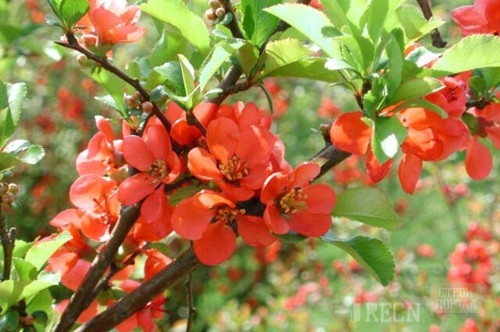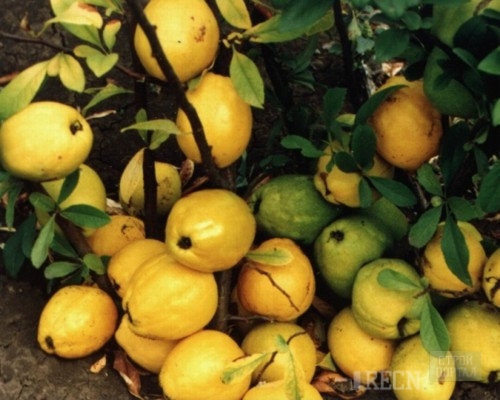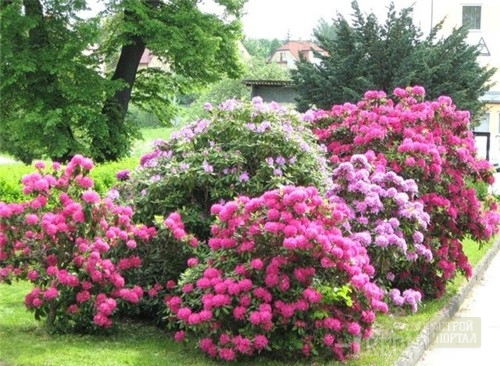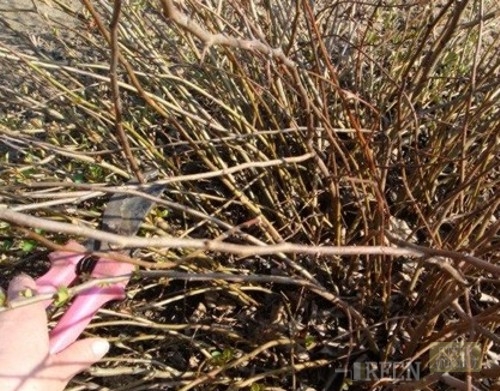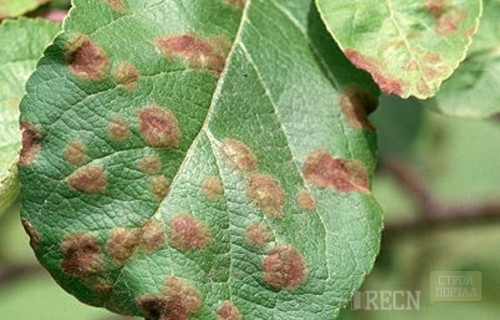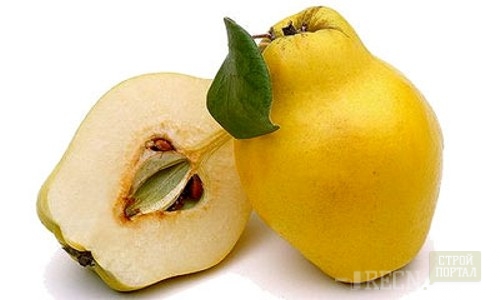
Landing and care for Japanese quince Plot.
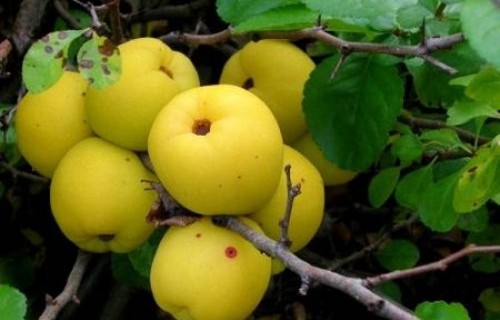
IIVA Japanese is a beautiful shrub and a useful plant that gives delicious fruits. For the first time Iiva was discovered about 400 years ago. Very loved to eat ancient Greeks in food. They came up with many different recipes, thanks to which Quince acquired new taste. Iziva was baked in furnaces, adding honey, while the core was cut out. For this extraordinary taste of baked with honey quince, she received a new name "split apple".
Content
But in Japan and China Quince, Henomeles grown only in decorative purposes. IIVA Japanese in landscape design took a strong leading position due to beautiful flowering and compact look.
In the spring, when the bush blooms, it is covered with beautiful white and pink flower, reaching size 5 centimeters in diameter. Young leaves are painted in the shade of bronze greenery, and the leaves that have achieved a certain age becoming dark green.
In Russia, the Japanese Quince begins to bloom in the last month of spring and before the leaves begin to bloom. Due to the fact that the floral buds are disclosed not all at once, Flowers Quince for a month. It is for this that its property is a plant fell in love with dacms and landslide their sections, forming a live fence.
Quince is a thermo-loving plant, therefore, if in winter those shoots that are not hidden under the snow are frozen, then flowering, and the crop will not be so abundant. And here is the part that has been preserved under the snow cover, it will bloom in the spring abundantly.
Quince Japanese landing and care
You can buy a Japanese quince for landing in a nursery or in a specialized garden store or order online store with home delivery. To choose a plant you like, you must first watch the photo of Quince Japanese.
Before planting Quince, you need to decide on the place. The plant loves light and if it is most of the day to be in the shade, it will be bad to develop.
Basic rules for landing:
- After the young plant is planted, he needs a moderate watering.
- Moisture is not allowed in the soil.
- Quietly grows by quince in soils of thin, samp and turf-podzolic. The soil should be weakly acid (pH is allowed 6.5).
- The plant does not tolerate peat soil.
- If you plan an alkaline quince in the soil, the plant may get sick.
- The best landing place is the south side near the house or any place protected from a draft and strong wind.
- In the hilly territory it is desirable to land Henomeles in the southern and southwestern part.
We prepare the soil
To plant a plant in the spring, the soil should be prepared in the fall. If there is a lot of weeds in the future place, they need to be removed and hold this plot under the "black ferry" to the date of landing.
If the soil is heavy, dense and non-homing, it must be fired. This is done like this: leaf land and sand is mixed to the soil, in proportions two parts of the earth, one part of the sand. It is also necessary to add compost - a mixture of peat with manure. Enough to add 10 kilograms per square meter of the Earth. Potassium and phosphorus are added, only 40 grams per square meter. It is necessary to deepen all fertilizers to a depth of at least 10-15 centimeters to create loose soil capable of watering water and skip air.
When planning sitting by Japanese quince, it is better to plant it in the spring, waiting for the moment when the soil begins to thaw, but before the kidneys start blooming.
In the fall, if there was a need to land a quince, you can risk. It is necessary to do this when the abundant leaffall begins. Do not forget that the plant is thermal lodge and can perish.
Tricks landing
- To the quince passed on, it is planted when it reaches a two-year-old age.
- Sit down a two-year apartment container, with a closed root system.
- For more adult shrubs, age up to five years old, you need to dig a hole, the diameter of which will be a half-meter, and the depth of half a meter and almost to the meter.
- In the prepared pit, the desired size is added a steam buckets of humoring, saltper (30 gr.), Ash (500 gr.) And superphosphate (300g).
- Japanese quince landing is carried out at a distance of half meter from each other.
- When landing the root of the quince (his neck) deepen so much so that it was at the ground level.
- The roots of the shrub can not be tremendous, as well as it is impossible to have a deeply place quince.
After the quince Japanese is planted, it is impossible to disturb it. So it is better to immediately explore all the nuances of landing and properly prepare the soil. With the correctly selected place, compliance with all the rules when landing and proper care, IIVA will grow about 50 years, and it will not be necessary to transplant to another place.
Care the right
In order for Quince to bloody and enjoyed a harvest every year, it is necessary to comply with the recommendations and know the rules how to grow Japanese quince.
In the summer, so that the isus bushes bloomed with a lush color, you need to explode the soil at a depth of about 10 centimeters. You can loosen the Earth at a time when weeds are passed.
Soil mulch is an excellent way of care of the shrub. Mulch (it can be wood solid, bark, crushed nut shell or peat), poured with a thin layer (up to 5 centimeters) around the quince. The soil mulch is performed in May, when she is well moistened and managed to warm up.
In the autumn period, the soil can be mounted after a cold low air temperature is established.
Care features:
- At first, after planting Quince, it is advisable not to feed, since enough fertilizers were laid in the pit during the landing.
- On the 2 or 3rd year after landing quince, with the onset of spring and as soon as the snow melts, under the bush you need to make feeding. It can be organic and mineral fertilizer.
- In the summer of Japanese quince you need liquid feeding. It is prepared from a mixture of nitrate ammonium (20 grams on one bush) and chicken litter (three liters).
- In order to protect the bush from freezing in the cold season, it is covered with spruce branches or dry leaves. Shelter quince late autumn.
- Young quince, as well as cuttings, too, are covered for the winter, only by another material. It can be spunbond or Loutrasil.
- If the plant is small, it can be covered with a cardboard box or a wooden box.
The reproduction of Japanese quince can be carried out in three ways:
- seeds;
- cuttings;
- vaccination;
- root shoots.
Learning to cut shrub
Japanese quince tolerates the haircut well, but amateur gardeners do not like to do this because of the presence of spines on the shrub. Work on trimming is performed in gloves from dense tissue so as not to damage the skin. Crop the quince in the spring. This is called "Sanitary Crimple", when dry branches are removed, as well as shoots that were damaged by frosts. To easily complete the trimming, use special garden tools that are pre-sharpened. It can be both an ordinary garden leg and a secateur. After all non-residential shoots are cut, the plant will be restored faster.
When the plant reaches the five-year-old age, the shrub is cut to its formation - so that it does not grow randomly and the branches did not grow up in different directions.
Principles of circumcision:
- So that the bush does not become thick, each year you need to crop out the part of the rigs. After circumcision leaves about two or three root shoots.
- The most valuable shoots - in the central part, they grow horizontally high to 40 centimeters.
- The shoots that grow strictly up vertically, as well as those that grow parallel to the ground, must be deleted.
- Pruning for the purpose of rejuvenation is performed when the plant turned 8 years and with a pronounced weakening of annual growth. Delete all thin and weak branches and remove those that have reached 5 years of age.
Fighting disease
IIVA Japanese is practically not subject to pest attack. When there is a long time on the street for a long time, the air temperature is low, spots and necrosis are beginning to appear on the leaves. This phenomenon is called "Disease Mushroom" - the leaves are amazed gradually and disappear over time.
The appearance of brown spots means the disease of the ramularity, and round brown plaques on the leaves are the diseases of the churchosposition.
Methods of combating diseases:
- Spraying a shrub soap solution with the addition of copper mood and Fundosol.
- Splashing solution for spraying: 150 grams of onion husk insist 24 hours in 10 liters of water. Strain and in the summer time to process shrubs three times in a row with an interval of five days.
Harvesting and storage
Japanese quince fruits are ripening in autumn, in October. One bush gives about one or two kilograms of fruits, with proper care - about three. The harvest you need to have time to collect before the onset of frosts, especially if the quince grows in Russia. You can collect harvest before when the fruits have not yet been dosed. They are collected and laid in wooden boxes and leave at room temperature. You can put it on storage, the room temperature should be plus 2 degrees.
The fruits of Japanese quince are very fragrant. Of them are preparing liqueurs, jam and jams are boiled, dried fruits and marmalad.




